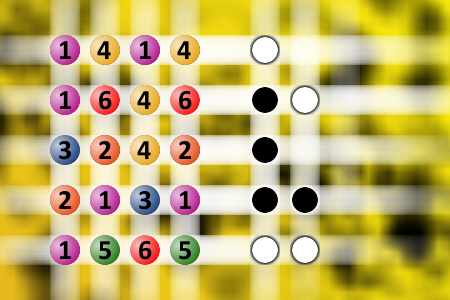Which is a winning combination of digits?
The computer chose a secret code (sequence of 4 digits from 1 to 6). Your goal is to find that code. Black circles indicate the number of hits on the right spot. White circles indicate the number of hits on the wrong spot.
Knowing Your Spouse
One of the funniest memories I have of the trials and tribulations of making the journey from childhood to adulthood was our annual summer vacation trek from Chicago to a cabin usually someplace on a lake in Wisconsin or Michigan.
Every year, it seems, we would get on a highway a few miles out of the city, and mom would wail, “Oh my goodness! I think left the iron on.” And almost every year we would turn around and go back. But as I recall, not once was it was ever plugged in. She often had the same fear that all our earthly possessions would disappear in a fire caused by her forgetfulness.
When I was about 14 years old, we were headed out of Chicago for Lake Geneva, Wisconsin and, sure enough, Mom gasped, “I just know I left the iron on.”
My father didn't say a word, just pulled over onto the shoulder of the road, got out, opened the trunk and handed her the iron.

